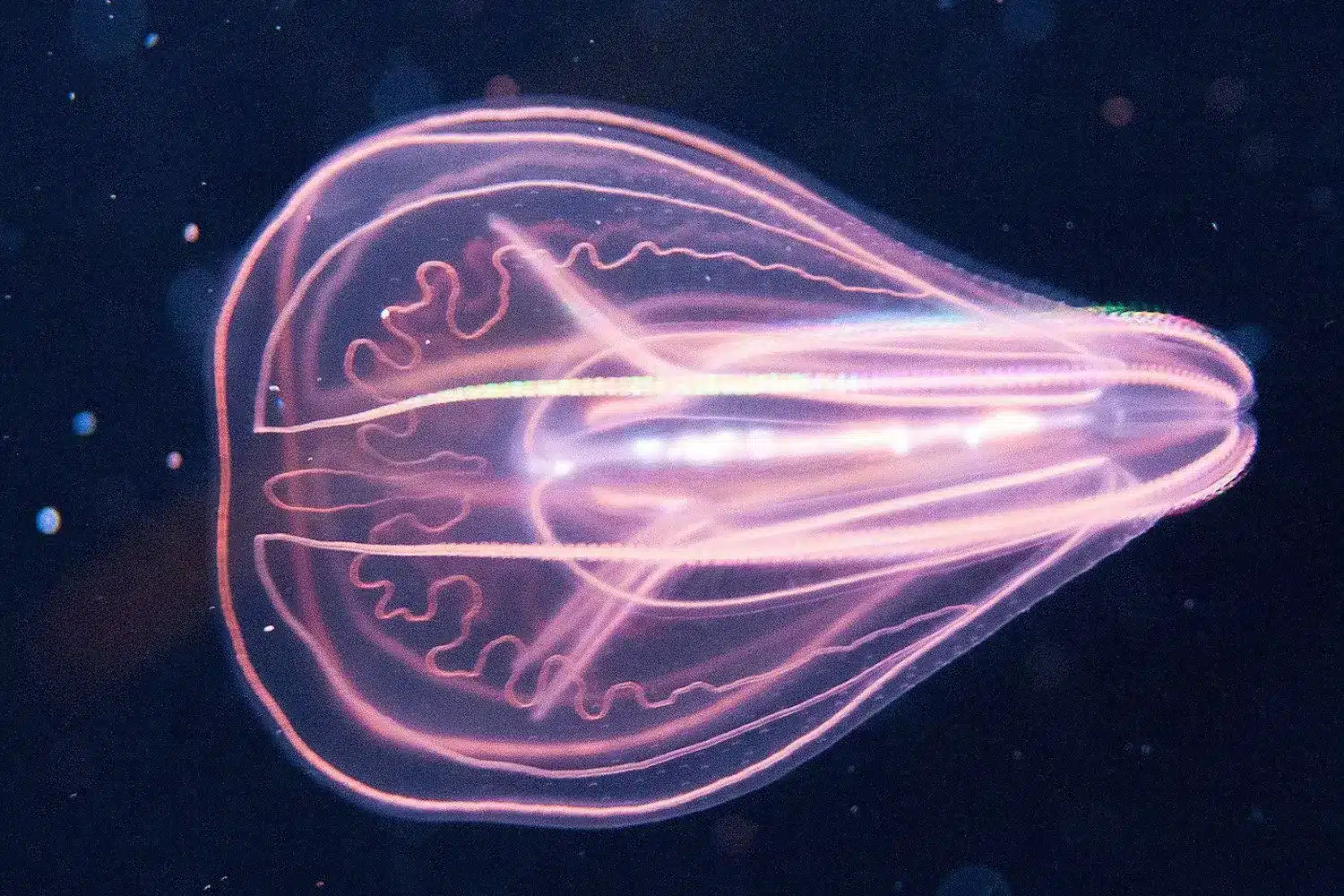About Comb Jellies:
- They are transparent, gelatinous invertebrates that drift through the waters of our global ocean.
- They are one of the oldest multicellular phyla in the animal kingdom, probably existing already more than 500 million years.
- There are between 100 and 150 known species of comb jellies, the best known of which are found close to shore.
- Description:
- They are colorful, simple invertebrates that are part of the family Ctenophora.
- Each species varies in length, but the average size of a comb jelly is about four inches long.
- Comb jellies get their name from their eight rows of plates made of fused cilia(little hairs) that they use to move through the water, which look like combs.
- They are the largest animals known to use cilia for locomotion.
- They have two large, trailing tentacles that branch out to create the appearance of a net-like structure of many tentacles.
- These organs serve as sticky fishing lines, which they use to trap and move prey to their bodies.
- These animals have two major cell layers, the external epidermis and internal gastrodermis; in between these cell layers is the mesoderm that is what gives the animals their gelatinous appearance.
- Many species are bioluminescent, meaning they can use proteins in their bodies to create an ethereal blue or green glow in response to stimuli like touch.
- Comb jellies are carnivorous and opportunistic, feeding on whatever passes them by.
- Unlike their close relative, the jellyfish, comb jellies do not have stinging tentacles and are harmless to humans.
Q1: What are marine invertebrates?
Marine invertebrates comprise many groups of different organisms and occur from the sea surface to the seafloor and into the substrate. They represent the vast majority of marine biodiversity and include, for example, sponges, corals, bluebottles, worms, shells, sea urchins, starfish, crustaceans, sea cucumbers and nudibranchs.
News: Researchers discover new species of marine creatures that can age in reverse
Last updated on July, 2025
→ UPSC Notification 2025 was released on 22nd January 2025.
→ UPSC Prelims Result 2025 is out now for the CSE held on 25 May 2025.
→ UPSC Prelims Question Paper 2025 and Unofficial Prelims Answer Key 2025 are available now.
→ UPSC Calendar 2026 is released on 15th May, 2025.
→ The UPSC Vacancy 2025 were released 1129, out of which 979 were for UPSC CSE and remaining 150 are for UPSC IFoS.
→ UPSC Mains 2025 will be conducted on 22nd August 2025.
→ UPSC Prelims 2026 will be conducted on 24th May, 2026 & UPSC Mains 2026 will be conducted on 21st August 2026.
→ The UPSC Selection Process is of 3 stages-Prelims, Mains and Interview.
→ UPSC Result 2024 is released with latest UPSC Marksheet 2024. Check Now!
→ UPSC Toppers List 2024 is released now. Shakti Dubey is UPSC AIR 1 2024 Topper.
→ Also check Best IAS Coaching in Delhi












